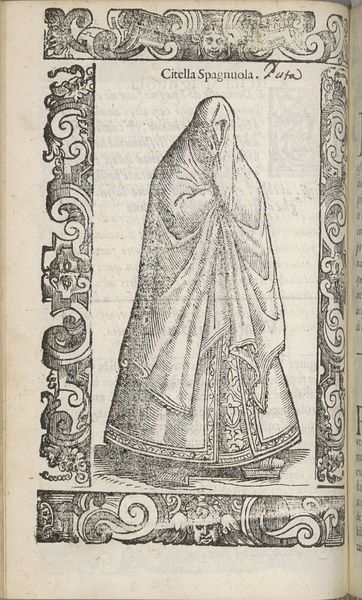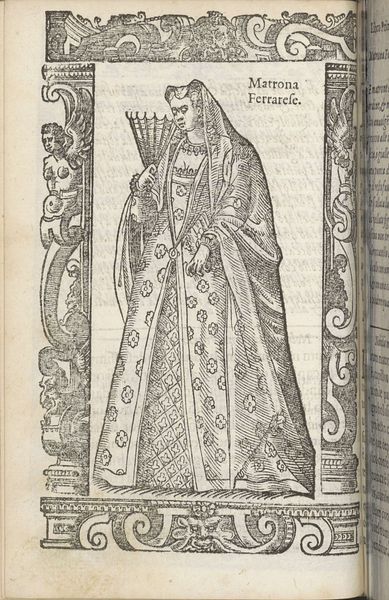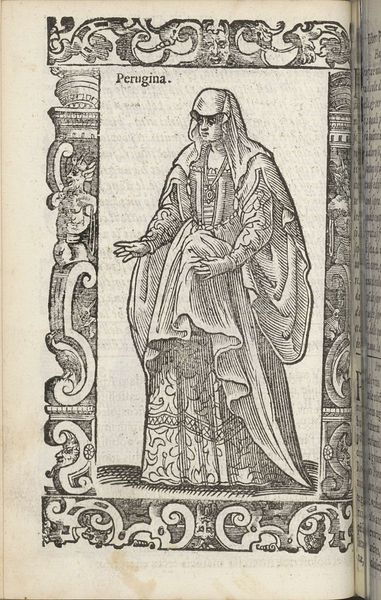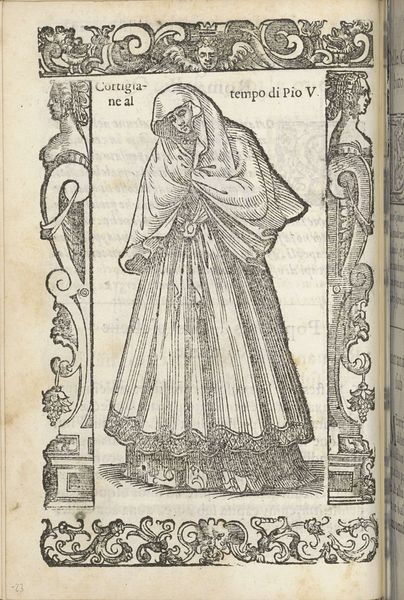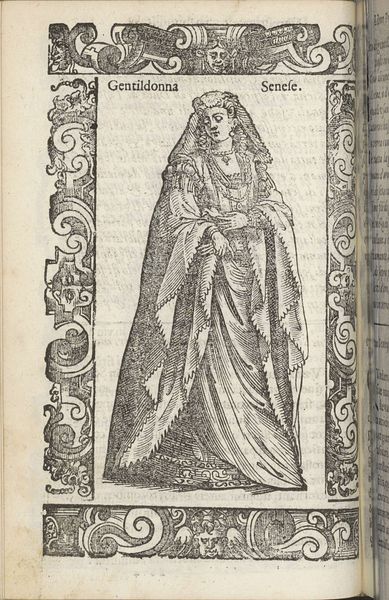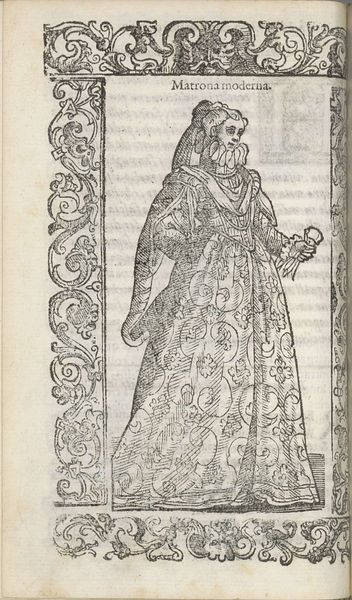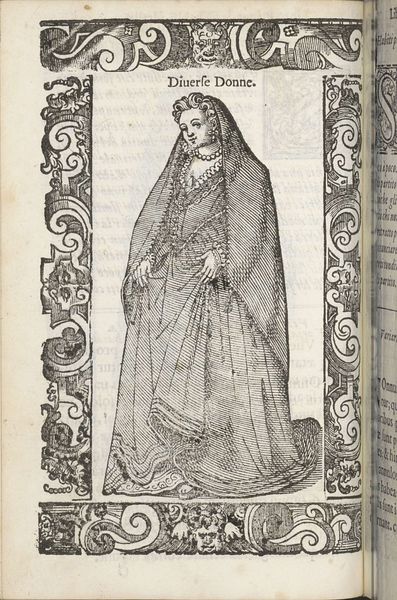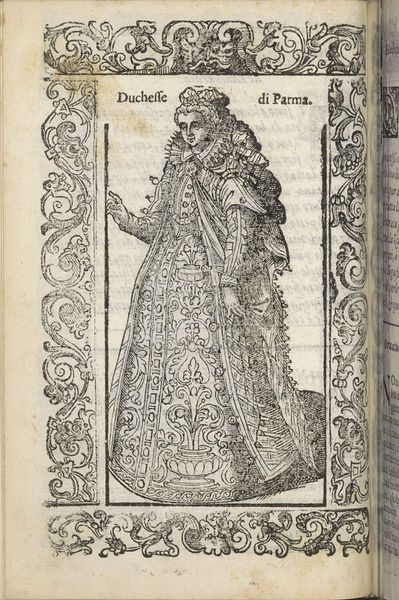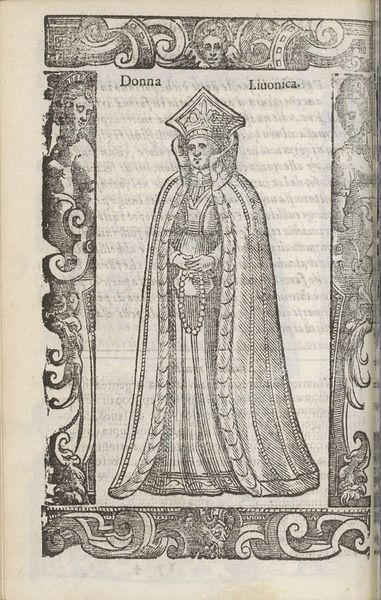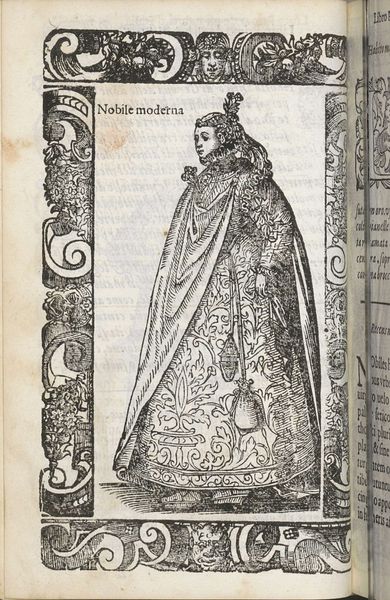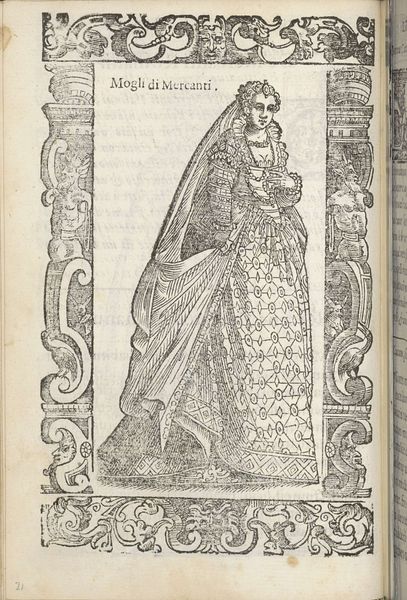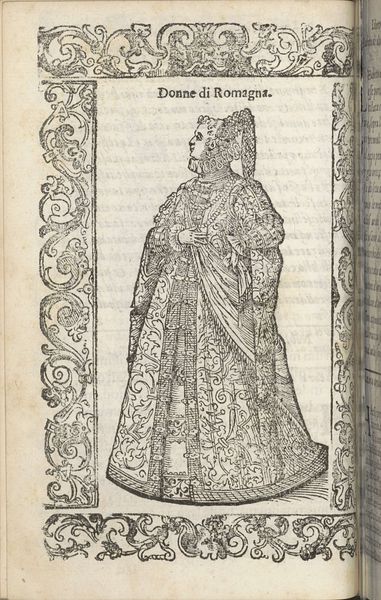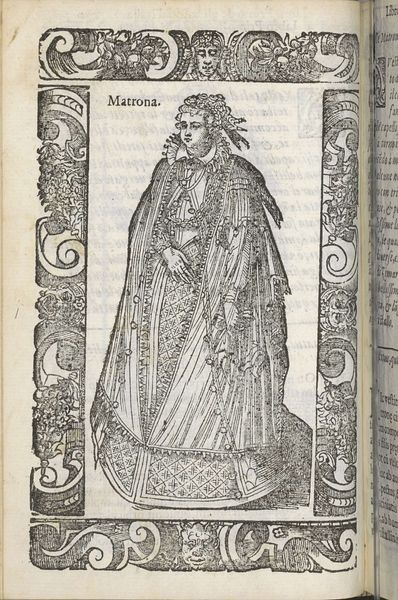
drawing, print, paper, engraving
#
portrait
#
drawing
#
medieval
# print
#
figuration
#
paper
#
11_renaissance
#
line
#
genre-painting
#
northern-renaissance
#
italian-renaissance
#
engraving
Dimensions: height 167 mm, width 125 mm
Copyright: Rijks Museum: Open Domain
Curator: This engraving, titled "Citelle Nobili," dates back to 1598 and is attributed to Christoph Krieger. It's a striking example of portraiture from the period, rendered in the linear style characteristic of Northern Renaissance prints. Editor: The immediate impression is one of restraint, perhaps even melancholia. The woman’s posture and downcast gaze, combined with the somber monochrome, evoke a sense of subdued emotion. Curator: Indeed, it’s crucial to contextualize this piece within the social conventions of the late 16th century. Prints like these often served as visual records of status and identity, circulating amongst the elite. How might we interpret this woman’s attire and presentation in relation to gender roles and societal expectations of the time? Editor: Absolutely, her clothing, every bit, reflects wealth and high social standing; still the pose conveys modesty. Considering feminist theory, we can question how much agency she truly had in shaping her own representation. Is this image a true reflection of her, or is it constructed to fulfill the patriarchal ideals of feminine virtue? Curator: The composition and ornamentation – look closely – also offers a compelling insight into the material culture of the period and how those who consumed such images affirmed these visual messages in daily life. What impact did art play on gender roles in everyday interactions? Editor: And what of its reception? These prints circulated amongst a specific demographic, reinforcing certain ideals within those social circles. They contributed to a visual dialogue, where class and power were displayed and negotiated through images like these. Did “Citelle Nobili” start, advance, or reflect a political narrative regarding wealth and position? Curator: The level of detail achieved through the engraving technique itself speaks volumes. The meticulous lines create texture and depth, showcasing the artist's skill and the patron's investment. I consider how artistic techniques serve political messages. Editor: Yes, and I see it how we see power still functioning in a capitalist environment. To engage with this print now means we have an important duty to acknowledge its position in perpetuating historic power imbalances while hopefully using that knowledge to strive towards change. Curator: Precisely. By understanding its historical context and critical implications, we appreciate this print, "Citelle Nobili", not just as a portrait, but also as a complex artifact embedded in a network of social and cultural forces.
Comments
No comments
Be the first to comment and join the conversation on the ultimate creative platform.
